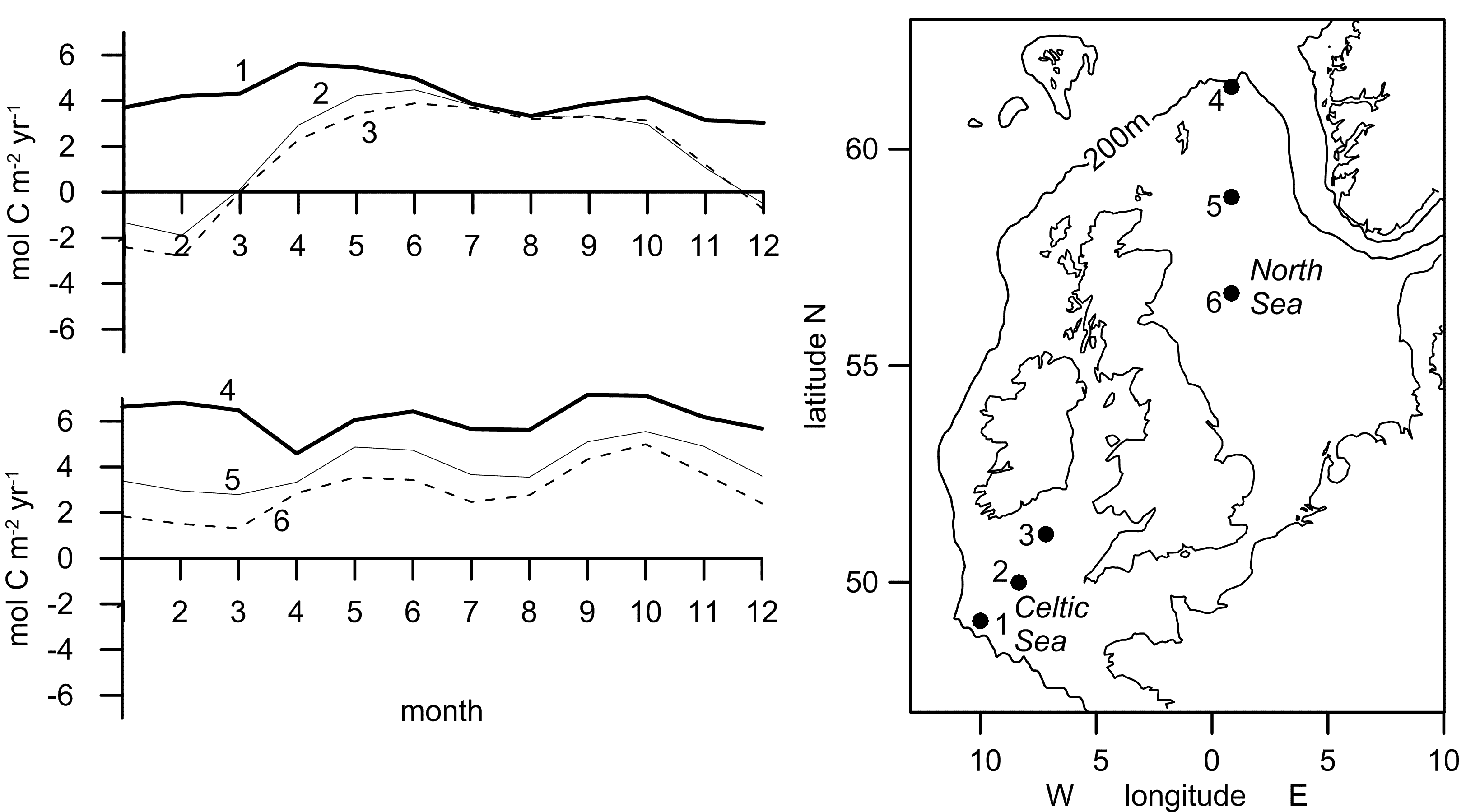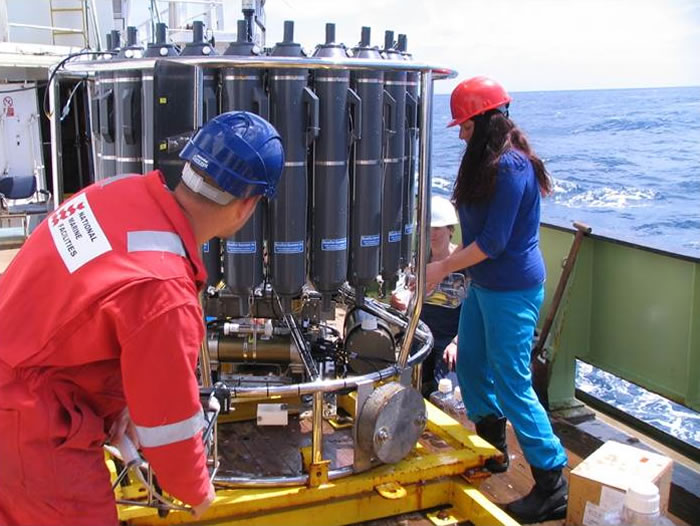Carbon and nutrient dynamics and fluxes over shelf systems (CANDYFLOSS)
The large continental land masses are surrounded by an extensive shallow (ca. 100m depth) sea known as the 'shelf sea'. These act as the boundary between the massively perturbed terrestrial environment and the vast open ocean marine system, and have huge socio-economic importance. They are the primary regions of human marine resource exploitation, including both renewable and fossil fuel energy sources, recreation, trade and food production. Although comprising only about 5% of the global ocean surface area, the shelf sea provide 90% of the global fish catches which form an important source of food to much of the global population. They also play an important role in the ecosystem services provided by the oceans as a whole, in particular in storing carbon away from the atmosphere.
Physical and biochemical processes in shelf sea influence the removal of CO2 from the atmosphere and the subsequent storage of carbon in the deep ocean. Biological growth draws carbon out of the water, which is then replaced by carbon in CO2 from the atmosphere. In the shelf sea this growth is supported by terrestrial and open ocean sources of nutrients, implying intimate roles for both the terrestrial biosphere and the open ocean environment in regulating shelf sea climate services. The oceans can also be a major source or sink for other greenhouse gases, including nitrous oxide (N2O), with the shallow shelf sea thought to play a key role.
-

- A computer model simulation of the monthly changes in the amount of carbon absorbed from the atmosphere into the sea. A positive number represents carbon moving into the sea from the atmosphere. Notice how the amount of carbon absorbed is dependent on distance from the edge of the continental shelf (the 200 metre depth line on the map). The Shelf Sea Biogeochemistry Programme will provide observations of carbon absorption that can test these model predictions, and also data on the physical and biogeochemical processes that cause the different rates of carbon absorption. Model results provided by Sarah Wakelin, National Oceanography Centre.
The spatial extent of the submerged continental shelves varies greatly. The NW European shelf sea is one of the largest and hence is likely to play a significant role in marine biogeochemical cycling, alongside providing a useful model for other systems. However, even in this relatively well studied region, we lack a good understanding of the principal controls on the cycling of carbon and the major nutrient elements, nitrogen, phosphorous and silicon. Consequently it is also difficult to predict how the cycling of these elements and hence the carbon removal they support may be altered by ongoing and potential future global change. Our work aims to address these uncertainties through a comprehensive study of the cycling of the major nutrients and carbon throughout the water column over the NW European shelf sea system.
Through close collaboration with a range of partners, we will be undertaking a year-long observation programme of the whole NW European continental shelf through 2014. We will measure the seawater concentrations of the major forms of carbon and nutrients. Combining these with physical water transports and measured transfer of gases (specifically CO2 and N2O) between the air and sea surface, we will be able to quantify the major fluxes of nutrients and carbon between the shelf sea and both the adjacent deep ocean and atmosphere. This will definitively establish the role of this shelf system in the global carbon and nutrient cycles.
We will also undertake 4 dedicated research cruises focused on understanding the seasonal cycle of biological and chemical processing of the different forms of the nutrients and carbon. We will measure the rates at which both the photosynthetic and consumer plankton incorporate nutrients and carbon into their cellular material, and subsequently how the combined activity of this biological/chemical system influences the cycling of the major elements. This will allow us to understand the ways in which the role of the shelf system in global cycles is maintained.
The combined work delivered by both this research and the other programme workpackages will allow us to identify aspects of the NW European shelf system which may be susceptible to ongoing or future environmental changes. Such knowledge will provide both enhanced scientific understanding and improved predictive tools for policy makers and other stakeholders.
